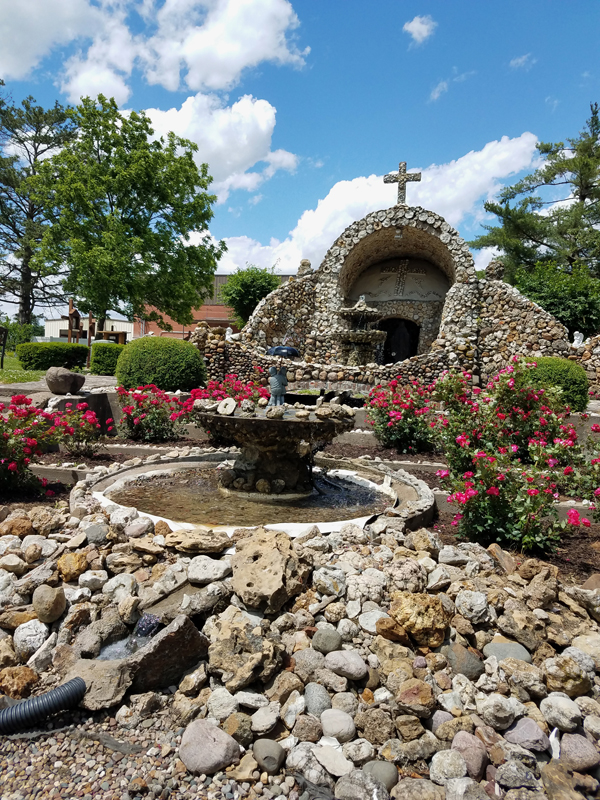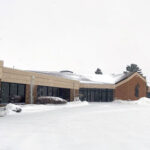By Hannah Hallman
Meant to depict ancient shrines situated on incredible hillsides in Europe and beyond, manmade grottoes offer people all over the world a place to worship and enjoy exquisite, elaborate scenes.
Catholic grottoes in North America are artificial caves constructed of an arrangement of shells, rocks, sparkling glass, ceramics, marbles and petrified wood. Water fountains, various sizes of water features and magnificent gardens are also popular features. Statues of saints and, most particularly, of the Blessed Virgin Mary are a focal point of these shrines. The collection of materials used in the construction takes quite some time. The placement of stones and the enormous amount of materials and gorgeous gardens are well thought out and involve many hours of work.

Our Lady of Grace Grotto is located in West Burlington, Iowa.
The Midwest has the largest number of grottoes than any other region in the world, according to an article by Peyton Smith, “Grottoes of the Midwest: Religion and Patriotism in Stone.” Most were the visions of German immigrants. Grottoes in this region are the most substantial depictions of folk or “outsider” art in the United States. The manmade Catholic grottoes in the United States are often visited not only for spiritual reasons but to reflect on and enjoy the beautiful surroundings.
Catholics in Iowa are privileged to have three grottoes: Our Lady of Grace Grotto at Divine Mercy Parish: Ss. Mary & Patrick Church in West Burlington; Mother of Sorrows Grotto on the campus of Mount Mercy University in Cedar Rapids; and the Grotto of Redemption in West Bend. Each grotto is unique but shares a similar theme.
Our Lady of Grace Grotto began in West Burlington in 1929 as a pencil-on-paper sketch by Father M. Kauffman who served at what was then known as St. Mary’s Church. With the help of Father Damian Lavery, assistant pastor of St. John’s Catholic Church in Burlington, the two priests created a vision of the impressive grotto and shrine. An extensive number of geodes and other types of stone were used, all donated. The time spent on construction was monumental and solely done by parishioners of St. Mary’s Church.
Construction on the Mother of Sorrows Grotto on the Mount Mercy campus also began in 1929. Contractor William Lightner, a convert to Catholicism, devoted himself to creating the beautiful grotto as homage to his Catholic faith. Lightner traveled extensively to find the materials for the grotto. His personal creative vision was created out of love and devotion to his faith. Lightner sought the direction of Father Paul Dobberstein, who created the Grotto of the Redemption in West Bend.
The West Bend grotto was an artistic undertaking of Fr. Dobberstein, who served Ss. Peter & Paul Church in West Bend. By far the largest manmade grotto, it covers a city block. Called “The Mother of all Grottoes,” The Grotto of Redemption consists of the largest number of precious stones in the world. Begun in the late 1800s, the Grotto of Redemption took about 12 years to construct.
(Hallman is a member of Divine Mercy Parish, Burlington/West Burlington.)











